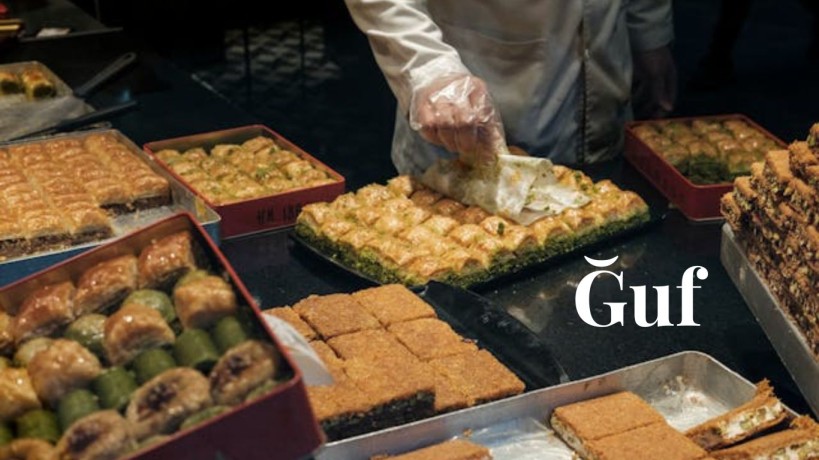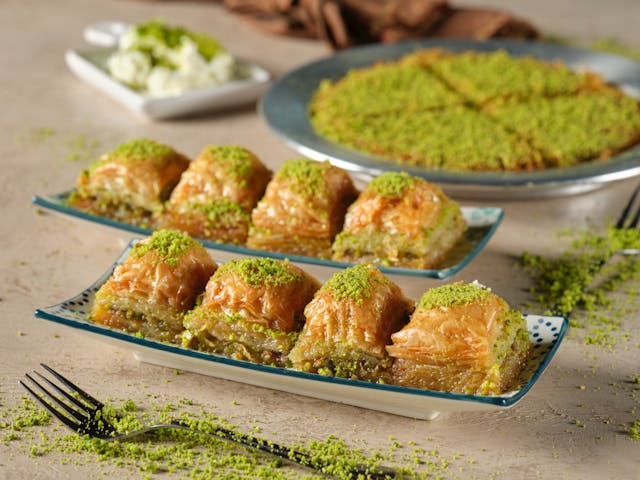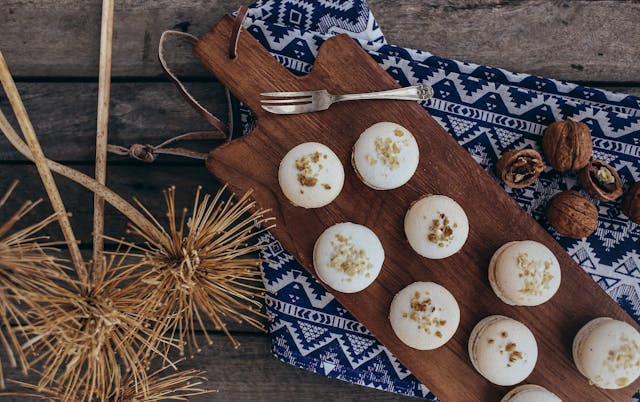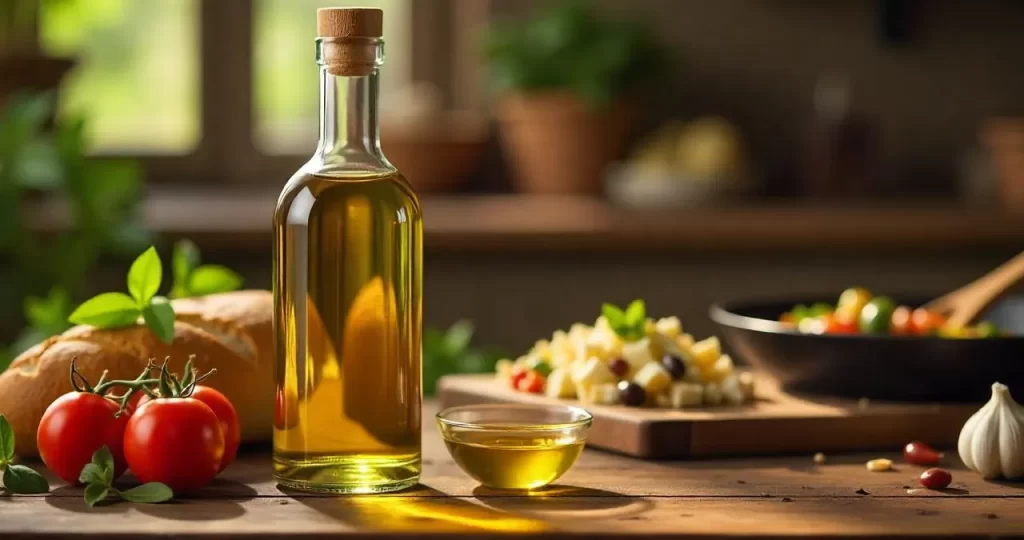Ğuf | A Traditional Turkish Dessert With Many Modern Variations

A food enthusiast always tries to search the variations that can capture the mind with versatile tastes forever. One such traditional dessert with a modern twist to a Turkish treat is Ğuf. It is one of the proofs of converting natural ingredients into a sudden innovation for the Sultan.
Let’s go on the journey of Turkish delicacy with the historical background, making procedure, health benefits, and more unknown things that can impress you to accept for your taste buds.
What is Ğuf?
Ğuf is a traditional Turkish pastry that is made with a delicate dough and a sweet or savoury layer of ingredients placed inside it. It continues to be a favourite food item and has been cherished in Turkish households for a long back as a dessert or an appetizer.
Presently some variations with its mouthwatering flavour and attractive appearance make it a distinctive profile from other pastries and has grown in popularity worldwide. Its crispy shell and each mouthful delight define the way of velvety but chewy feelings.
The History and Origin:
The Ottoman Empire Sultan Abdul Hamid II when in power, Ğuf is thought to have originated. The palace chef was trying to create a new treat for the sultan, but accidentally this distinct dessert was presented.
As time goes on, it spreads throughout Turkey and nearby nations and is served at weddings or any special occasion. Savory variations are increasingly popular in modern society with honey, sugar syrup, pistachios, walnuts, and even feta cheese or spinach.
Now it plays a significant role in Turkish food and culture and spread over the globe with variations in modern society. But we must try to feel the taste buds with basic flavor reminded of its fascinating history when visiting Turkey.
How to Make Ğuf?
Ingredients:
- Flour or Semolina.
- Salt.
- Powdered Sugar.
- Egg yolk.
- Water.
- Rose water or other flavored extracts.
Tools:
- A heavy bottom saucepan or bowl.
- Wooden spoon.
- Parchment paper.
- A sharp knife or cookie cutter.
- A baking tray.
- Microwave oven.
- Rolling pin or pasta maker.

Preparation Method:
Dough Preparation:
- Take a deep bottom saucepan or bowl.
- Mix flour, a pinch of salt, and water to make the dough.
- Thoroughly mix until it is smooth and elastic.
- You can add rose water or other flavorings to enhance the taste.
- Knead dough until it becomes flexible and smooth. Add more cornstarch, if it’s too sticky, or sprinkle water if too dry.
- Let it rest for about 30 minutes after covering it with a wet and clean cloth.
- Roll the flour mixture into thin sheets with a rolling pin or pasta maker.
- Cut the thin flour sheets into small squares or circles using a cookie cutter.
Alternative Way: You can divide the entire dough into small balls to make shaping easier. Take each ball in between your palms gently without applying too much pressure.
Preparation of Filler:
- To make the filling, you can use equal parts of walnut, sugar, cinnamon, and clove powder.
- Alternatively, the filling can be made with honey-dipped almonds or pistachios.
- Fill each small square or circle with customary filling.
- Seal the edges of each piece by folding it and pressing firmly with your fingertips.
- Lay off all Ğuf on the parchment-lined baking sheet.
Baking Process:
- Preheat the oven to 180°C for 10 minutes.
- Insert the ready baking sheet into the oven.
- Bake it for about 20-25 minutes at 180°C or until just beginning to turn golden.
- Take it out from the oven and place it on the serving tray.
How to Make Syrup.:
Before serving the delicious dessert, you can prepare syrup to elevate it to another level.
- Just you will need to combine water and sugar in a pot over medium heat.
- Let the mixture simmer gently to ensure the perfect sweet coating until it reaches a syrupy consistency.
- Remove it from the heat and let it cool slightly.
- Pour the syrup over the balls and allow them to soak.
How to Serve:
- Arrange the balls on a decorative plate for an eye-catching presentation.
- Serve it hot pairing it with a cup of hot tea or coffee and enjoy!
You can give it a new shape and transform this traditional treat as per your choice. Who knows, there may be an innovation that spread worldwide!
How to Store Leftovers of Ğuf?
Place any leftovers of this Turkish desert into an airtight container and store it in the refrigerator. It will be fresh and prevent them from drying out. You can store them at room temperature also for a few days only.
It should be kept in mind that before using any dessert leftovers, just reheat it slightly in the microwave before serving to bring the previous taste.
What are the Health Benefits and Risks of Ğuf?
This sweet treat is made with sugar and starch. Hence it is more important to use it in moderation. Some beneficial ingredients like dried fruit and nuts add nutritional value. However, some variations may have added artificial colors or flavors that could pose the risk of allergies or sensitivities. Moreover, diabetic patients or individuals watching sugar intake should be aware before consuming it.
Variations of Ğuf:
Apart from the traditional Turkish treat, several variations have been observed over time and spreading throughout the world. Some of them are including:
- Vegan and gluten-free.
- Made with Chocolate and nuts.
- Preparation from dried fruits and spices.
- With Cheese and honey.
- This dessert with Ice cream and caramel.
- With Saffron and almond.
- Even made with coffee and cream.
Some Mistakes: Must Be Avoided
Resting the dough:
Allow the dough for at least 30 minutes to ensure the right texture and consistency of the delight.
Overcooking the syrup:
Boiling the syrup too long may result in a sticky and overly sweet dessert. Keep your eye on the syrup when it cooks.
Avoid old and expired ingredients:
For authentic desserts with the best texture and flavor, any old and expired ingredients must be strictly avoided.
Prepare your hands and tools with oil:
The proper shape of Ğuf balls can make them stick together without adequately greasing your hands and tools.
Not greasing your hands and tools adequately when shaping Ğuf balls can make them stick together or lose their shape. Remember to lightly oil everything you’re working with to prevent mishaps during preparation.

Some Turkish Desserts and Their Type:
So many different types of Turkish desserts with their unique flavor represent the tradition and specialty of the nation. Here some of them have been mentioned.
- Acıbadem kurabiyesi – A type of Biscuit.
- Alaçatı Kurabiyesi – One variation of cookie.
- Ayva tatlısı – A preparation of fruit.
- Biga peynir tatlısı – A dessert of pastry.
- Cezerye – Delicious treat of Candy.
- Dondurma or Maraş Dondurması – A battered dairy ice cream.
- Hoşmerim – One kind of halva.
The Final Thought:
The name of a versatile and delicious Turkish delight with various combinations and flavors is Ğuf. Any food enthusiast can enjoy either a traditional dessert of Turkey or modern twists. They can prepare as per their choice or search for the right one from the shop as the possibilities are endless.
The various ways of making this delicious dessert have been discussed throughout this article. Select the right one and allow your taste buds to sense and experience the joy of indulging in this Turkish delight.
FAQs:
Can you serve the Ğuf that is required suddenly?
Prepare the Ğuf completely and keep it in a refrigerator with an airtight container to meet the sudden requirement.
What type of food item is Ğuf?
It is a traditional Turkish sweet treat with a yummy flavor.
How to maintain the consistency of dough to prepare Ğuf?
The dough should be flexible and smooth. Add more cornstarch for too sticky, or sprinkle water if the dough is too dry.



